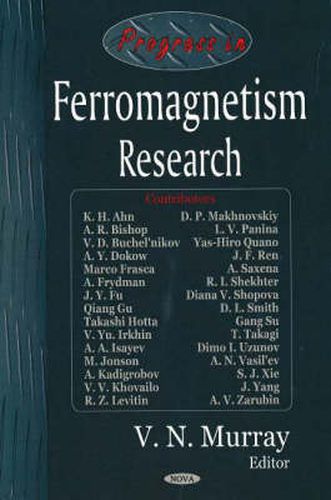Progress in Ferromagnetism Research

Progress in Ferromagnetism Research
Ferromagnetism is a form of magnetism that can be acquired in an external magnetic field and usually retained in its absence, so that ferromagnetic materials are used to make permanent magnets. A ferromagnetic material may therefore be said to have a high magnetic permeability and susceptibility (which depends upon temperature). Examples are iron, cobalt, nickel, and their alloys. Ultimately, ferromagnetism is caused by spinning electrons in the atoms of the material, which act as tiny weak magnets. They align parallel to each other within small regions of the material to form domains, or areas of stronger magnetism. In an unmagnetised material, the domains are aligned at random so there is no overall magnetic effect. If a magnetic field is applied to that material, the domains align to point in the same direction, producing a strong overall magnetic effect. Permanent magnetism arises if the domains remain aligned after the external field is removed. Ferromagnetic materials exhibit hysteresis. In 2004, it was discovered that a certain allotrope of carbon, nanofoam , exhibited ferromagnetism. The effect dissipates after a few hours at room temperature, but lasts longer at cold temperatures. The material is also a semiconductor. It is thought that other similarly formed materials, of boron and nitrogen, may also be ferromagnetic. This new book rings together leading research from throughout the world.
This item is not currently in-stock. It can be ordered online and is expected to ship in approx 4 weeks
Our stock data is updated periodically, and availability may change throughout the day for in-demand items. Please call the relevant shop for the most current stock information. Prices are subject to change without notice.
Sign in or become a Readings Member to add this title to a wishlist.


